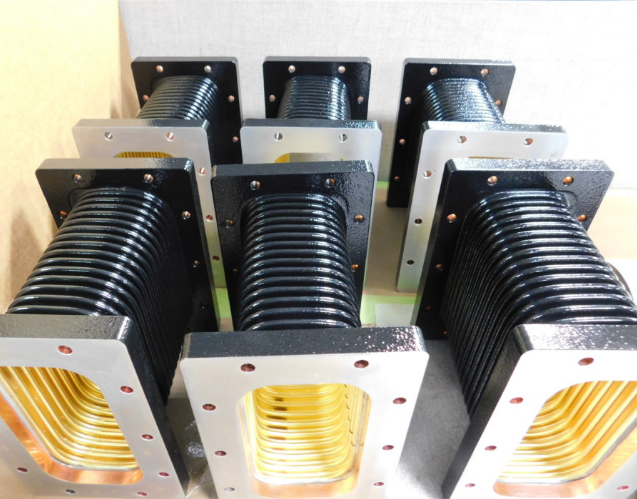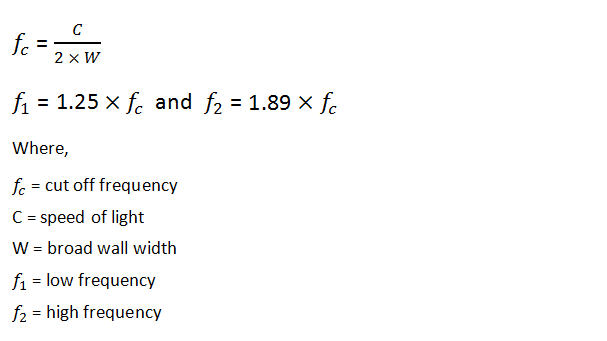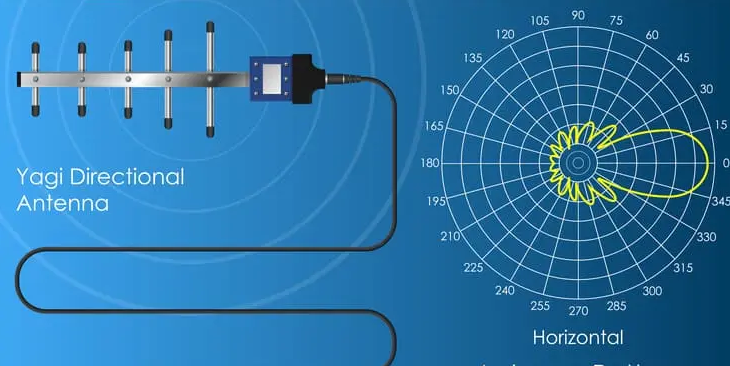Table of Contents
Understanding SATCOM Antenna Basics
Definition and Role in Communication
Satellite communication antennas are the kinds of antennas that have a crucial function in the means of satellite communication. Since the satellite communication mode of communication transfers state, voice as well as video data over space, it is the indispensable function of mobile satellites to assist in maintaining the means to transmit a source of data and to assist to have the strength of the source controlled in the right ways.

Mathematical Principles: The Parabola
The shape of SATCOM antennas is based on the principles of the parabola. Since the geometric shape of the parabola is distinct from all the rest of the shapes, its structure is effective to transfer the needed satellite signal onto the focus of the parabola , the point on the dish surface where the signals of the satellite get converged. In this way the energy of the signal of the satellite is focused in one and therefore at the same focused point delivers a high flow of energy.
Parabolic Dish Antenna Geometry
The function of the geometric shape of the parabolic dish is to maximize the strength and direction of the signal. The two parameters, diameter and depth of the dish, control the gains of the performance. The focus of the dish referred to as the focal length is also the essential description of the parabolic dish in order to assist the control of the performance of maximum energy of the dish signal transfer.
Key Components and Functionality
Feed System
The product of the feed system is the feed horn which delivers the focus of the reflected signals of the parabola while the performance of the needed signal conversion is delivered by the low-noise block downconverter or LNB.
Azimuth and Elevation Adjustment
In order to control the antennas’ directivity of the signal, the satellite must remain stationary in at least one position relative to the Earth’s surface. These positions are based on the modification of the antennas in the azimuthal difference of the degree of 180 from left to right and in and out of 90 degrees in the vertical plane known as elevation.
Performance Metrics
Gain
Defined in decibels, the ability of the antenna to concentrate the energy in such a way can be effective is the gain of the antenna. The higher gain the greater effect of success. Beamwidth . Defined as a means of the direction of the radiation pattern, the beamwidth is the gain of the performance.
Signal-to-Noise Ratio
The means of the constant ratio of the signal source compared to the reduced amounts of noise that can affect the system communication steadily is the SNR permanently. Dropping the ratio results in a system that will often become not feasible to use.
Key Components of SATCOM Antennas
What Is the Passive Reflector?
The components of a parabolic SATCOM antenna that play important role in the process of signal capturing and focusing are presented as the passive reflector. While there might be satellites for telecommunication that operate in a signal transmission mode with no return, like a GSM network, for example, the SATCOM system utilizes the satellite as an intermediary transferring singals. The passive reflective surface concentrate the electromagnetic waves that then pass on to the active elements and are collected in the specified spot. The reflector is usually manufactured out of metal or is composed of metal coating. It has a well-defined parabolic form, thus any signal that encounters the surface is reflected to one single focal point on the reflector surface .

What Are the Active Elements of the Antenna?
The most important active instrument placed in the focal spot of the arrangemnt is the Low-Noise Block Downconverter or LNB. The first function of the LNB is to amplify the weakened signals. The second function is to downconvert the frequency of the signal it received from the satellite – otherwise it would be impossible to pass the signal 30,000 km from the antenna to the receiver without distortions . The LNB’s technical characteristic that might vary between 0.6 dB and 1.2 dB is called noise figure. The lower the noise figure, the higher quality of an LNB it represents. Acquisition efficiency of satellite TV receivers is in the proportion of the noise figure of the LNB it utilizes.
Another instrument playing an active role in the SATCOM antenna is the Block Upconverter or BUC that converts a signal provided by a modem through band-pass filtering and subsequent upconversion . The major distinction of the BUC is that it transmitts the signal to the satellite, while the LNB is used for receiving it. The power output of the BUC is highly variable: from a couple of watts for a VSAT system to the 100-watt range for TV broadcasters.
Why Are the Supporting Structures Important?
Mounting and positioning mechanisms for SATCOM antennas must be highly stable and must maintain the antenna in a precise position. While the weight of the antenna must certainly be taken into account, the mounting mechanism must be specifically implemented to guarantee alignment with satellites on both the azimuth and the elevation. Mobility implies the necessity for mobile vessels, like maritime ships, for example, to utilize motorized antenna mounts that enable maneuvering of the antenna and proper alignment with the satellite. The foundation of the antenna and its anchorage or maintenance of any other type must be strong to hold against wind, rain or snow for long periods of time. While for a small satellite dish the foundation can be small, a huge antenna might require reinforced concrete foundation block and speciazed anchoring to guarantee the structure is not moved by wind or rain.
Working Frequency Bands and Their Implications
Microwave frequency bands are the core of modern satellite communication (SATCOM) and span from about 1 GHz to 30 GHz. These bands are divided into ranges that are each designated to divergent types of communication services. Microwaves are a valuable tool for SATCOM because they can be easily transmitted for long distances, have high bandwidths, and experience minimal interference. The very chosen frequency band for a given set of circumstances influences everything from the design of satellite’s antenna system to the rate at which data can be sent. The adaptations that each band type undergoes to be adaptable to different tasks impact its benefits . The most common microwave bands used in satellites are the C and Ku bands.
Specific adaptations which frequency bands have to undertake to be distributed to various tasks
Satellite communication has to use many different frequency bands based on what the site and situation allow. For instance, bands that have lower frequencies can be broadcasted further and can also have an increased ability to penetrate through intervening atmosphere or earth. As a result, lower frequency bands are often used for broadcasting and maritime communication. At the same time, the improved bandwidth of higher frequency bands allows for an increase in the number of television channels that they can transmit. These frequencies between 12 and 18 GHz are thus well-suited for high-speed internet and HDTV . The choices also result in differing expected sizes of antennas. A transmitter in the higher frequency of these bands has to be more accurately pointed to the receiver because of the reduced beam width. The lower ones included in the C Band will also remain in high demand because of their reliability, particularly in rural and high-density zones.

A brief discussion of the Bands C and Ku
The C band refers to the range of 4 to 8 GHz and is generally used for applications that are broadcasted over long distances, including transcontinental microwave links and television. Advantages include its reliability over extreme range, as it is far less affected by rain fade and other forms of atmospheric attenuation than the higher bands of frequency. One disadvantage is that its wide area of coverage also means that it cannot transmit as much data back and forth. The Ku band spans 12 to 18 GHz and is used for satellite television and broadband communication .
Design and Material Aspects of SATCOM Antennas
Material Impact on Performance:
-
The material used in manufacturing SATCOM antennas has an effect on every aspect of their performance, ranging from signal strength to durability and weight. High-performance materials, such as aluminum, carbon fiber, and fiberglass are commonly used, as they are strong and relatively lightweight, as well as corrosion-resistant. Aluminum is popular among satellite communications users because of its excellent balance of weight and conductivity, which makes it an ideal material for large parabolic reflectors. Carbon fiber and fiberglass are often used in mobile and portable antenna systems where light weight is a priority, even though these materials are less conductive than metals. The materials’ thermal stability is very important, because temperature changes can alter the dimensions of the antenna and affect its focus and effectiveness for signal reception and transmission.
Importance of Reflector Size and Shape:
-
The size and shape of the reflector have a powerful effect on the antenna’s gain and beamwidth. Since a larger reflector captures and focuses more signal than a smaller one, it has higher gain. While it seems that large antennas are always better, it is not always the case, as their beamwidth is reduced and they are not as easy to install. Most reflector shapes are parabolic, as they are designed to convey incoming signals to a single focal point, while the precision of the curve has a huge effect on the performance of the antenna. Even small mechanical deviations from the ideal shape can greatly reduce the effectiveness of the signal’s reflection.
Ideal Size and Shape of the Reflector:
-
Depending on the specific requirements of each individual satellite communications user, they can choose between a larger antenna that provides more focused signal and covers longer distances, but requires precise pointing at the satellite, as well as being harder to install, and a smaller one that has a larger area of coverage and is easier to install, but may not be able to provide the same quality of signal and can be more easily jammed. There are three types of SATCOM antennas that are currently in widespread use.
Types of SATCOM Antennas and Their Uses:
Parabolic Dish Antennas:
-
The most commonly used antenna for fixed satellite services, they are also known for their high gain and directivity, making them well-suited for broadcast and communication when dealing with distant satellites. They vary in size from less than a meter for consumer satellite internet to several meters for ground stations.
Phased Array Antenna:
-
Consisting of multiple small antennas that can be electronically steered to focus on a specific satellite without the need to move the antenna itself, phased array antennas are used in mobile SATCOM applications, such as satellite phones and onboard satellite communications in planes and ships. They are easy to point and are very fast at acquiring and keeping the signal.
Horn Antennas:
-
Widely used with parabolic reflectors, these antennas are mostly chosen for their simple design and effectiveness in feeding a signal to or receiving from the reflector. Horn antennas are used whenever moderate gain and wide bandwidth are needed, as in satellite ground stations and telemetry.
Appropriate Antenna Type:
-
In short, a satellite communication user should always pay attention to the specific requirements of their situation. Phased array antennas and horn antennas are often preferred in mobile and other applications where they are more effective than the conventional dish. While the parabolic dish antenna provides the best performance no matter what the requirements might be, such empirical data might not be available to users, so understanding of these factors and certain types of antennas is crucial to the efficient use of a SATCOM system.
Directivity and Its Functional Significance
Directivity in antennas is the extent to which the energy is focused on a certain direction. This property is vital for improving communication efficiency by increasing the signal strength in the desired direction and preventing other users from accessing harmful levels of energy.
https://dolphmicrowave.com//dolphmicrowave.com//www.youtube.com/watch?v=Xdc7l0O5fYo
Isotropic Antennas: The Perfect Baseline
An isotropic antenna is a theoretical construct that radiates power equally in all directions . It can be considered as a reference point for measuring the degree of directivity exhibited by a real antenna. Isotropic antennas have a directivity of 0 dBi and are not used in practical settings. However, their influence in establishing the performance levels of real-world devices should not be overlooked.
Omnidirectional Antennas: Uniform Energy Spread
Omnidirectional antennas distribute the signals equally across a horizontal plane and deliver a 360-degree coverage pattern. They are perfect for applications that require broad coverage in relatively short distances, such as Wi-Fi routers or mobile base stations . The directivity in omnidirectional antennas ranges from 2 to 9 dBi, focusing the energy in the horizontal plane and broadening the occupied area.
Benefits and Drawbacks of Directional Antennas
Applicability of Directional Antennas
Directional antennas possess high gain because the energy is spread towards a certain direction . As a result, the range is significantly increased, allowing more efficient use of power and more reliable communication over longer distances. These antennas are used with gains exceeding 20 dBi on satellites and Yagi devices for long-range applications they far surpass isotropic and omnidirectional antennas in focused settings.
Limitations of Directional Antennas
The primary drawback of directional antennas is that they should be aimed towards the intended to dispatch or the receiving antenna. Misalignment can severely impact the signal. In addition, the focused nature of the delivery can be limiting in some cases, such as offering full coverage over a certain area. This can only be realized with multiple antennas, thus adding unnecessary complexity.
Adaptive Antennas and Their Impact
Dynamic Performance
Adaptive antennas, or smart antennas, pioneer a new technology that dynamically changes their beam form and directivity based on the current context . They can focus their energy based on the target in several ways, such as vibrational movement, thus achieving remains:increased signal intensity and quality, with minimal interference caused to other spectrum users. Wireless communications greatly benefit from this technology that is used in almost all modern cellular systems. Being indispensable in the ongoing 5G developments, smart antennas can focus on a target and provide a fast, effective connection.
Technological Evolution and Applications
The landscape of communication technology has changed considerably, driven by advances by the military and the commercial sector. Communication systems have grown significantly more sophisticated and enabled connectivity and reliable communication even in the most challenging conditions.
Military Enhancements: MUOS Overview
Mobile User Objective System
The Mobile User Objective System is currently one of the most cutting-edge military systems providing U.S. Navy and allied forces with secure, high-speed voice, and data communication across the globe. Two MUOS and relay ground stations are currently in place, with plans to begin the launch of the remaining four satellites and direct the existing delivery capacity to the moon by 2022 . The system effectively operates in the UHF constellation like commercial cell sites, but the reach of the devices has been extended to users in the forest, remote locations, and urban areas with line-of-sight limitations. Moreover, the system offers near-coverage around the globe, including at the poles.

Enhanced Operational Capabilities
MUOS satellites offer a data rate that is 10 times faster than its predecessor, the Ultra High Frequency Follow-On (UFO) satellite. Moreover, the MUOS system has resulted in a total of 50% increase traffic capacity across a range of missions, including environmental reconnaissance. Due to its inherit security of satellite communication and high speeds, the system is the ultimate communication solution facilitating rapid load and troop dispatch and streaming of real-time video footage.
Commercial 3G-Based Improvements
Incorporation of 3G in Satellite Communication
The adoption of 3G technologies by satellites by the commercial sector has resulted in improved efficiency and raided and decreased latency when processing data . Many commercial satellites deployed the systems have been a part of efforts to improve internet services in remote and rural areas, acting as providers for ADSL services as well. Additionally, satellites using the newly implemented technology have been vital for functioning as mobile networks.
Wider Access to Remote Areas
Satellite subcontracted by commercial companies have featured 3G capabilities bridging the digital divide for several remote areas across the globe. Rural regions and the poor in urban areas in Asia and Africa now have access to satellite internet and communication services that promote education, health care, and economic opportunities.
Connectivity in Challenging Areas
Support for Operations and Conditions
Satellite communication has supported and secured operations otherwise impossible, such as conducting forest surveys and patrol or guest preservation of remote and inaccessible areas. However, the advances in communication in such remote areas also generated commercial gains such as the introduction of satellite phones or improved satellite radio or TV.
Satellite communication and military and NAFTA efforts to ensure consistent and reliable connection have ensured the safety of many natural disaster victims and scientists researching remote polar conditions.
Engineering Concepts in SATCOM Antenna Design
Satellite communication (SATCOM) antennas are often a rather complex piece of engineering that encompasses many different concepts to make the communication efficient, reliable, and of high quality. Among these, the most notable are antennas patterns, polarization, multibeam and array antennas, and novel approaches in optical communication systems.
Antenna Patterns and Polarization
Defining Antenna Radiation Patterns
Radiation pattern is a graphical representation of the radiation properties of the antenna seen from a given point in space and shows the radiation of the antenna in different angles. It contains the main lobe, the radiation in which is the strongest, and side lobes, which are the undesired directions of radiation. It affects the directivity and gain of the antenna and depends on the shape – a highly directional antenna formed a narrow and long main lobe, which is critical in long distance satellite communication.

Definition of Polarization
Polarization is the orientation of the electric field vector of the electromagnetic wave in a vertical-horizontal plane. SATCOM typically uses linear, circular, or elliptical polarization to accommodate the differences in the transmission and reception of the system, making the signal as clear as possible and minimizing the interference. The right polarization at the point of reception also plays a pivotal role because the signals lose a heap of amplitude when misaligned.
Engineering Multibeam and Array Antennas
Multibeam Antennas: Increased Capacity and Coverage
Multibeam antennas produce an array of beams throughout space from the bosom of one antenna. That allows it to communicate with many different targets, be they satellites or places on the Earth, at the same time. As such, multibeam antennas are also significant, albeit less pronounced, in their increased capacity and coverage made possible by a single device. By implementing complicated feed networks and beamforming, the antennas can form and reform beams to any points in space within the capacity of the antenna.
Array Antennas: the Basics
Array antennas consist of many smaller antennas, called elements, that are used in unison as a single, larger antenna. Their construction allows for controlling the phase and amplitude of the signal in each of the elements to steer the beam in the right direction without actually moving it. Therefore, in SATCOM, the array antennas can track the satellite easily and are mobile and suitable for tracking the satellites by planes or ships.
Novel Approaches in Optical Communication Systems
How They Work and Their Capabilities
The systems, colloquially known as “space laser guns,” work by using lasers to transmit data across the vacuum of space. They provide a much higher radio frequency, or RF, rate than their traditional counterparts when properly engineered, which signals them an ability for terabits per second. The low level of divergence of the laser beams also increases the difficulty of intercepting the signals, thus also increasing the systems’ security.
The Existing Novelties and Their Challenges
In their nature, the systems are obstructed by atmospheric obstacles, such as clouds, which can impair the quality of the signals. Additionally, in their efforts to create a feasible system, the engineers are forced to deal with the difficulties of designing fine-tracking mechanisms as precise alignment of different satellites and the corresponding bases is necessary. Adaptive optics is one such complication, as is the development of finer tracking algorithms. However, in essence, the existence of these highly improved communication systems reflects the moving times of the industry.







